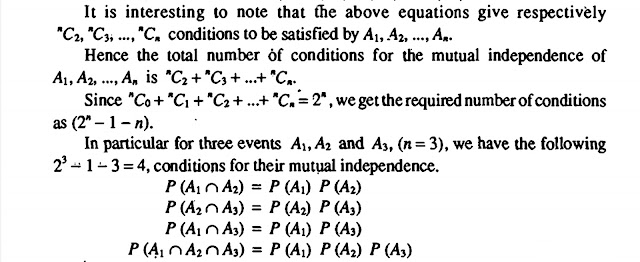Relation:
A relation R from A to B is a subset of the Cartesian product A x B and is derived by describing a relationship between the first element (say x) and the other element (say y) of the ordered pairs in A & B.
Representation of Relation:
A relation is represented either by Roster method or by Set-builder method. Consider an example of two sets A = {9, 16, 25} and B = {5, 4, 3, -3, -4, -5}. The relation is that the elements of A are the square of the elements of B.
- In set-builder form, R = {(x, y): x is the square of y, x ∈ A and y ∈ B}.
- In roster form, R = {(9, 3), (9, -3), (16, 4), (16, -4), (25, 5), (25, -5)}.

Terminologies (Terms used):
- Image:
for any ordered pairs, in any Cartesian product (say A × B), the second element is called the image of the first element. - Domain:The set of all first elements of the ordered pairs in a relation R from a set A to a set B.
- Range:The set of all second elements in a relation R from a set A to a set B is called Range.
- Co-domain:
The whole set B is called Co-domain. Range ⊆ Co-domain.
Total Number of Relations:
For two non-empty set, A and B. If the number of elements in A is h i.e., |A| = h & that of B is k i.e., |B| = k, then the number of ordered pair in the Cartesian product will be |A × B| = hk. The total number of relations is 2hk.
Types of Relations:
There are many types of relations.

Empty Relation:
If no element of set X is related or mapped to any element of Y, then the relation R in A is an empty relation, i.e, R = Φ.
Universal Relation:
A relation R, called universal relation if each element of A is related to every element of B.
Suppose A is a set of all natural numbers and B is a set of all whole numbers. The relation between A and B is universal as every element of A is in set B.
Empty relation and Universal relation are sometimes called trivial relation.
Inverse Relation:
Let R be a relation from set A to set B i.e., R ∈ A × B. The relation R-1 is said to be an Inverse relation if R-1 from set B to A is denoted by R-1 = {(b, a): (a, b) ∈ R}.
Identity Relation:
In Identity relation, every element of set A is related to itself
only. I = {(a, a), ∈ A}.
For example, If we throw two dice, we get 36 possible outcomes, (1, 1), (1, 2), … , (6, 6). If we define a relation as R: {(1, 1), (2, 2), (3, 3), (4, 4), (5, 5), (6, 6)}, it is an identity relation.
Reflexive Relation:
If every element of set A maps to itself, the relation is Reflexive Relation. For every a ∈ A, (a, a) ∈ R.
Symmetric Relation:
A relation R on a set A is said to be symmetric if (a, b) ∈ R then (b, a) ∈ R, for all a & b ∈ A.
Transitive Relation:
A relation in a set A is transitive if, (a, b) ∈ R, (b, c) ∈ R, then (a, c) ∈ R, for all a, b, c ∈ A
Equivalence Relation:
A relation is said to be equivalence if and only if it is Reflexive, Symmetric, and Transitive.Ordered Relation:
Partial Ordered Relation:
A relation R⊂X ✖️ X is called partial ordering if it is Reflexive,Anti-Symmetric, and Transitive, that is
(x , x) ∈ R for all x ∈ X
(x , y) ∈ R ,(y , x) ∈ R ⇒ x = y
(x , y) ∈ R, (y , z) ∈ R ⇒ (x , z) ∈ R
Total Ordered Relation:
When all the elements of a partial order relation are comparable, the relation is called a total order Relation.
i.e; a,b ∈ A and a≤ b and b≤ a
[ ≤ is called relation ]
Linear Ordered:
That is, every element is related with every element one way or the other.
A total order is also called a linear order.
PreOrdered/Quasi Ordered:
A binary relation R on a set A is a quasi order if and only if it is
(1) irreflexive, { (x , x) ∈ R for all x ∉ X }
(2) transitive. (x , y) ∈ R, (y , z) ∈ R ⇒ (x , z) ∈ R.
(minimal/maximal element):
Let < A, ≤ > be a poset, where ≤ represents an arbitrary partial order. Then an element b ∈ A is a minimal element of A if there is no element a ∈ A that satisfies a ≤ b. Similarly an element b ∈ A is a maximal element of A if there is no element a ∈ A that satisfies b ≤ a.
(least/greatest element):
Let < A, ≤ > be a poset. Then an element b ∈ A is the least element of A if for every element a ∈ A, b ≤ a.
(well order): A total order R on a set A is a well order if every non-empty subset of A has the least element.
















